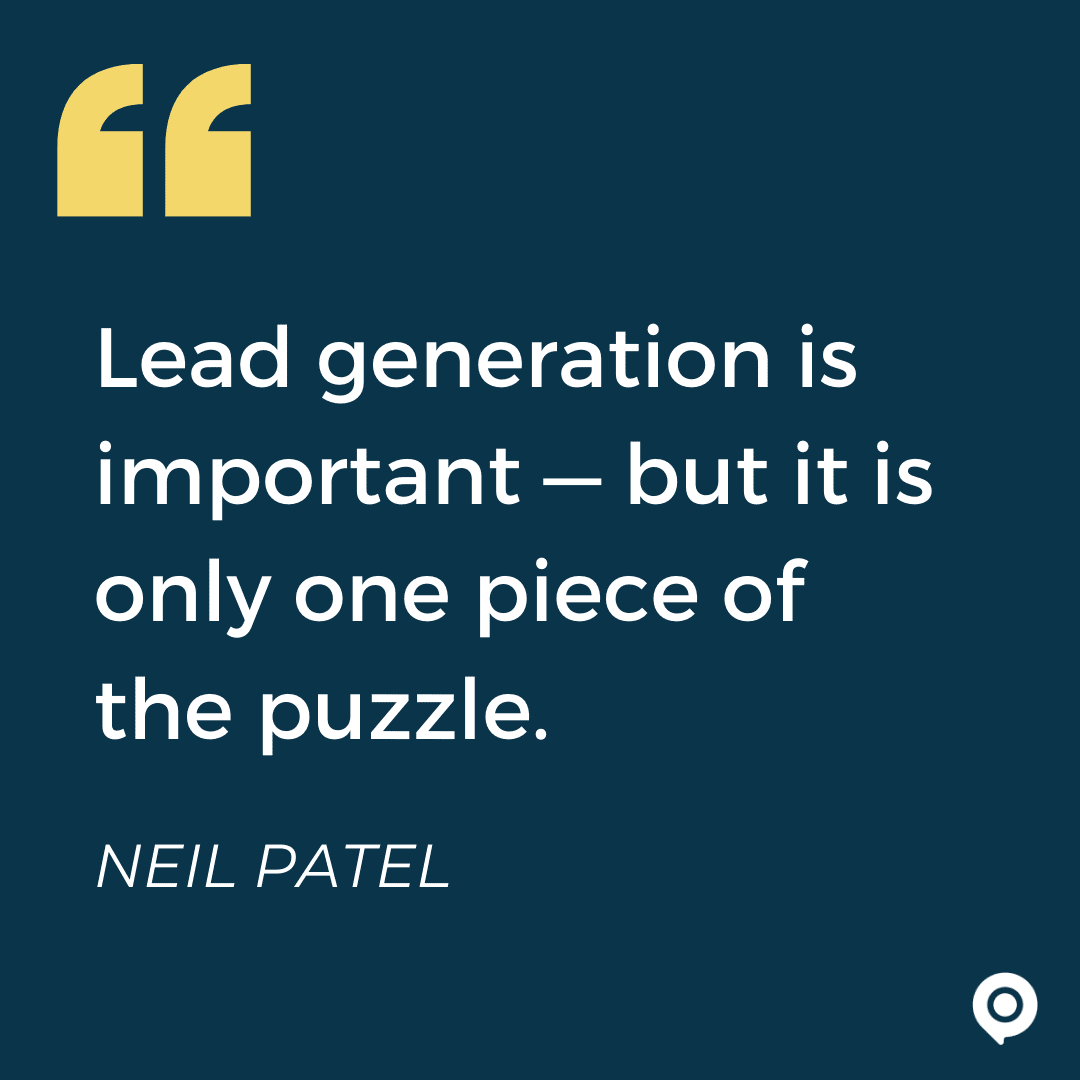
I hit an important landmark in my life a couple summers ago — the planters that I bought for my back porch lived for eight whole weeks before they died (sigh). I always have good intentions, but somewhere in the busyness of summer life, I simply forgot to give them water.
Newsflash: Regardless of how much you want, need, or love those plants, if you don’t give them the right amount of water and sunlight, they will indeed die.
Our prospective customers are just like plants. No matter how much you love, need, or want to keep them “alive,” if you do not provide proper nurturing, they too will “die.” You need to optimize your lead nurturing in order to see results.

The goal of lead nurturing is to build up a relationship with a lead before ultimately asking them to pay you for something. Under-nurturing results in cold, uninterested, potentially upset leads. In other words, they’ll be as dead as my plants with little to no hope of bringing them back.
What qualifies as under-nurturing? Things like…
– Contacting only some of your leads
– Reaching out and responding slowly
– Assuming information instead of asking questions
Inconsistent Outreach
Just like my plants, leads require attention. Depending on the lead, they’ll require different amounts of attention and care. But failing to engage leads, even when you had the best of intentions to contact all of them, is often the first misstep of nurturing.
According to a massive study from 2011 that was published in Harvard Business Review — and still widely cited by many — only 27 percent of leads are ever contacted. Though more current data of that exact sort is not readily available, other similar research suggests that not much has changed.
For instance, a smaller 2016 analysis showed that 50 percent of leads never receive a response at all. In a test done by Workato in 2020, 18 percent of companies never responded by email and 69 percent never responded by calling. (They unfortunately didn’t provide a percentage of businesses that never responded at all.)
You put a huge chunk of time and money toward generating leads. So quit wasting your time and money and do everything you can to at least start a conversation. And then keep following up! It’s generally accepted that it takes about eight touch points through varying methods to make a sale.
Simply contacting each lead is just the start to better nurturing!
Slow Response Times
I gave my plants the proper attention for a time, but I didn’t act quickly when it mattered most to those plants. I just… forgot them.
So what times matter most to leads and how do you ensure you don’t let them wither? Turns out it may be a lot faster than you think.
You’re 80 percent less likely to qualify a lead if it takes you more than five minutes to respond. And according to another oft-quoted survey, this one from Velocify, waiting an hour to call a lead improves conversions by just 36 percent. This is compared to the 391 percent improvement seen by calling within a minute.
However, in 2018, Drift reported that just 10 percent of businesses responded to leads within 5 minutes. In the Workato test, they found that companies took, on average, almost 12 hours to even send a personalized email. Those companies took 14 1/2 hours to reach out by phone.
Recently there haven’t been any major studies or analyses on the overall average lead response time, but previously it was reported that companies took about 42 to 47 hours.
So though reps certainly reach out faster than they used to, most still aren’t personally following up within the same day. And the cost of slow response times adds up fast.
Inadequate Context and Data
Did you know that you can actually take all guesswork right out of caring for your plants by learning how to read a plant tag? Plant tags show you all the information you need to keep the plants healthy and growing — sunlight needs, watering requirements, growth rate, and more!
When you assume that potential customers want or need the same things, you get into trouble. Definitely use customer personas and the like to create general “lead tags.” Then take it a step further by diving into each conversation with the intent of really learning about the leads in front of you.
Here are some basic examples of data enrichment questions to ask your leads:
- What industry are you currently in?
- What specific problems do you want to solve with our solution?
- What products/solutions are you currently using?
- How many employees will be using this potential new solution?
So ask lots of questions, take what you learn from them, think about previous interactions with leads and customers who were in similar situations, and then determine a course of action for selling to them that clearly communicates your solution as THE SOLUTION.
Despite the clear benefits of lead nurturing, a study by MarketingSherpa indicated that only 36% of marketers actively nurture their sales leads. That means 64% of marketers are likely pushing a sale on their leads before they are ready.
So, those numbers are from 2013. But considering the poor nurturing efforts related to contact rates and speedy responses, my money’s on this data not being that different now. (And considering my own recent experiences with being nurtured as a lead, I’m not personally convinced either.)
Leads are like plants… most of the time
Once a plant is dead, there is no amount of care and money that will bring it back. But that’s where leads can differ. If you haven’t done a great job nurturing in the past, it’s not a lost cause for reviving dead leads.
Similarly, if you’ve reached out quickly and with relevant content and a lead is still not responding, ask yourself, “Is the lead a good fit for my business? Or does this lead need more time?” There’s no amount of nurturing you can do to force a lead to convert if the fit or timing isn’t right. Know when to let go, and then do it.
When you want to optimize your lead nurturing and take on all three problems talked about above, you need Skipio. With this platform you reach out to every single lead faster than your competitors and hold conversations that turn into sales. Available for individual use and entire teams, Skipio ensures under-nurturing never happens again.
This post was originally published on July 31, 2018. It was most recently updated March 9, 2021. Major updates include more recent statistics in relevant sections and additional instructions for improving lead nurturing processes.



